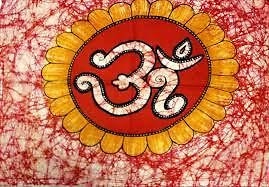
Batik – The Mind-blowing Dyeing Method (Wax-resist)
Meaning:
‘Batik’ can be precisely translated as ‘wax writing’, and it is a combination of a few Indonesian letters such as ‘titik’, ‘tik’, and ‘bitik’; ‘titik’ means dot, ‘tik’ is small, and the meaning of ‘bitik’ is ‘to sketch’. Thus ‘Batik’ becomes something like ‘picturizing anything in a minute, but, comprehensive manner ‘.


History:
The correct commencing point of ‘Batik’ art form is not identified. However, ‘Batik’ is popular in countries such as ‘Java Island’, ‘Indonesia’, ‘China’, ‘Philippines’, ‘Nigeria’, ‘Sri Lanka’, and ‘Malaysia’
In the past, the use of ‘Batik’ was limited to royal and affluent women who enjoyed social recognition; ‘Batik’ collection was a pastime for such ladies. That being said, as per a general belief, the charisma of ‘Batik’ had also lured the 4th century BC Egyptians; ‘mummies’ were covered using wax coated linen that were straightened using styluses. As far as India is concerned, the use of ‘Batik’ got started during the period of 645 – 794 AD.
Batik technique:
‘Batik’ is a typical method of making attractive patterns by making use of ‘waxing method’. Wax is spread over various parts of the material used (generally cloth) for applying a single color; then with the help of boiled water, this wax is taken out, and the procedure is repeated using other attractive colors.
Initially the designs are sketched on the material and filled with liquefied wax. Then the desired dye is applied, and after sometime, the filled wax is carted off; this can be done by abrading or using boiled water. The un-waxed areas will get dyed and the waxed areas will have the base color; thus the material gets a distinctive alluring design.
A rich blend of paraffin and resins taken from plants, and bees is made use of for Batik creation. Diverse types of tools including ‘canting’ are used to apply this wax mix on the material. A firm brush or something like that is utilized for creating bigger designs. Another technique that is generally done to bring in unique designs is to crumple the surface where the wax blend is applied; this will create small cracks in the wax mould through which the smeared dye will enter, thus creating wonderful designs.


Attributes of Batik:
-
The key revealing factor of ‘Batik’ is the attractive splinters that you can see through the design, which make the design more appealing.
-
Remember, the ‘Batik’ on either side of the saree will be palpable; if the design on one side is more intense than the other, probably that piece may be a duplicate one!
-
Fabrics that are tagged as ‘natural fibers’ such as linen, cotton, and silk are commonly used to print ‘Batik’ designs; this is due to the entailed boiling process.
-
Duplicate ‘Batik’ may look elaborate and fine; authentic ones are those that are handwoven and so there will be little bit of daubs in the design.


Visit Sanskriti website, you can very clearly see the Batik pattern and the close range images of ‘Batik’. Moreover, we give rear image as the final picture, through which you can clearly identify the stuff.


Batik Varieties
‘Batik’ comes in two categories; ‘Hand-painted’ and ‘Printed’. The classification is based on the way it is produced.
Hand-painted:
The entire work is done manually here, as the name suggests. A special tool, ‘canting’ is made use of to draw the design. ‘Canting’ is a little copper can in which some pipes of diverse sizes are fixed.

Printed:
While creating printed ‘Batiks’, instead of ‘canting’, a specially created metal mold is utilized to draw the design. This tool is doused in the melted wax and then applied on the material.


